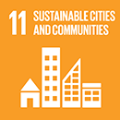This project aims to help understand what aspects of public space in Liverpool today are working well for residents and visitors.
- #RecoverSouthCoast
- Antimicrobial Resistance
- Building Community Resilience to Bushfires
- Community Resilience
- Cultural Burning for Resilience
- Cultural Revitalisation
- Disability inclusion and capacity building for emergencies
- Microfinance and Women's Empowerment
- Olivier Ferrer Fund
- Ready for Anything
- Sense Spaces
- Smart Cities for understanding living in Liverpool
- Stories affording pathways to healing
- Stronger Culture, Healthier Lifestyles
- Sustainability in STEM
- Weed management in post-fire landscapes
Smart Cities for understanding living in Liverpool
This project will deliver an understanding of the nature of the public spaces in Liverpool that are used and enjoyed the most. The research will enable Liverpool City Council to design policies that will protect existing spaces that work well for residents and design new spaces that emulate or improve on the best existing spaces. This will protect the interests of the most vulnerable people in society, who are more likely to require the refuge that good public spaces provide. This will help to build a resilient community in Liverpool as it undergoes significant development and population growth in the coming years.
It will harness the data that the Smart Cities program will deliver (from the 20 people-counting sensors located throughout Liverpool town centre) and supplement this with information about:
- people’s experience of greenspace and the reasons they chose to visit certain areas
- the nearby greenspace around each of the Smart Cities people-counting sensors, including heat load, native/exotic vegetation and its structure and water features
- other qualities of the space around each sensor (such as light, shade, view etc) and quantities (benches, shelters, pavers, water and more)
Media
- Why the digital revolution needs a human touch, The Stand, 10 June 2019
- Dr Hugh Forehead from SMART Infrastructure Facility (EIS) is leading the research team. His deep involvement in the Smart Cities program in Liverpool places him in an ideal position to coordinate the project.
- Jenny Atchison (ASSH) - social science research to provide qualitative information on how people experience green space and why people chose to visit each public space
- Kris French (SMAH) - research into the greenspace and heat amelioration by vegetation around each of the sensors
- Cole Hendrigan (EIS) - qualities of public space which attract people (light, shade, activity, views and other people) and quantities (benches, shelters, pavers, trees, water and more) which make the spaces valuable.
- Louella McCarthy (SMAH) - social research, community engagement and gender/cultural analysis.
- Eliza de Vet (ASSH) - Research Assistance
- Johan Barthelemy (EIS)
- Eva Watts (EIS) - Research Assistance
Through workshops we will connect the project to key stakeholders in Liverpool city council and the research being undertaken through the Clean Air and Urban Landscapes hub and their partners in the Office of Environment and Heritage and ANSTO.



